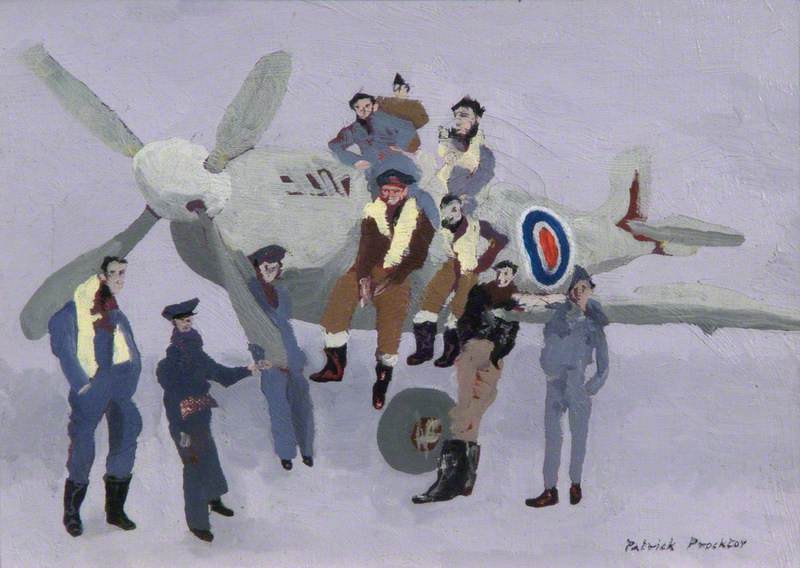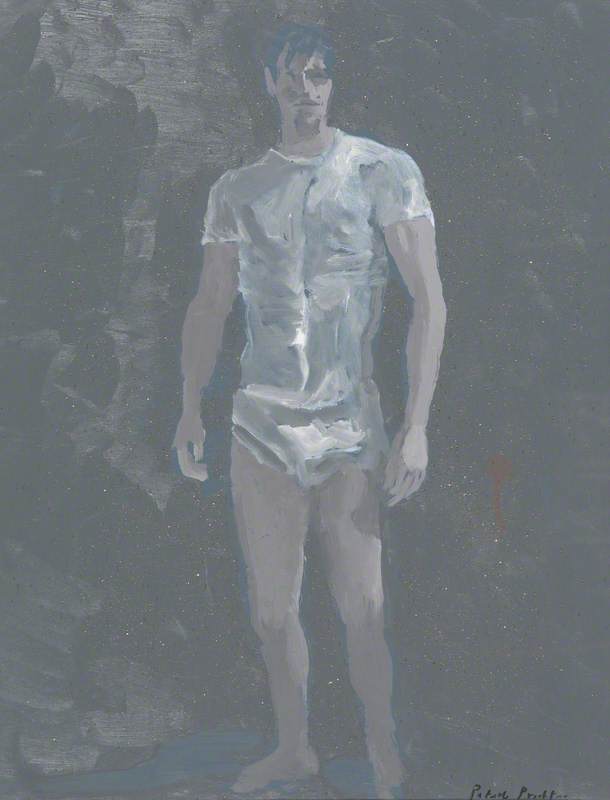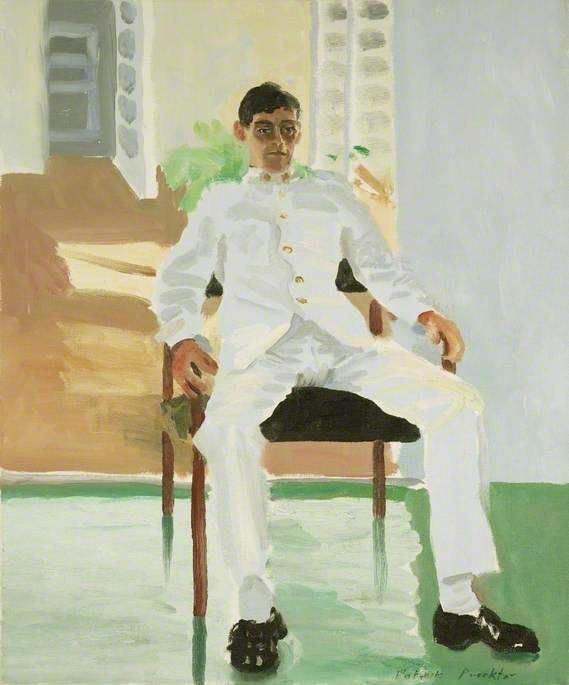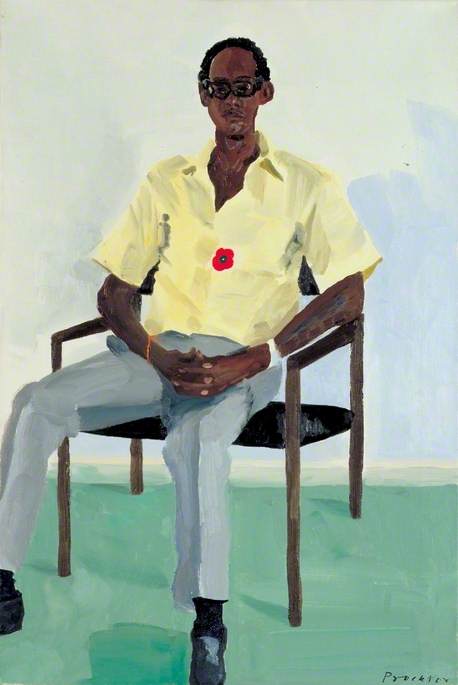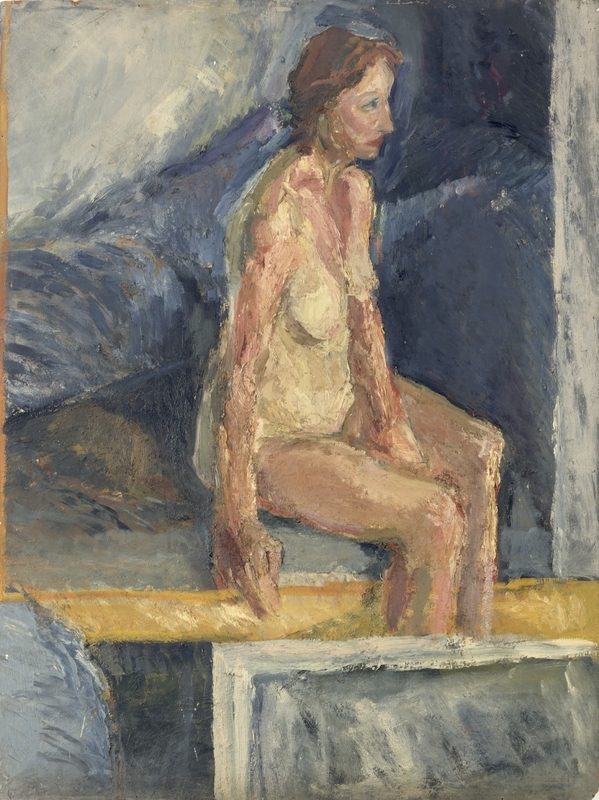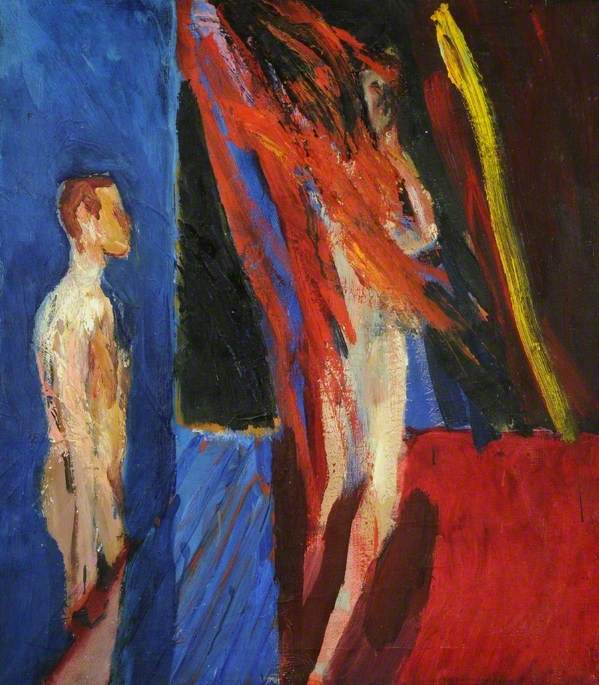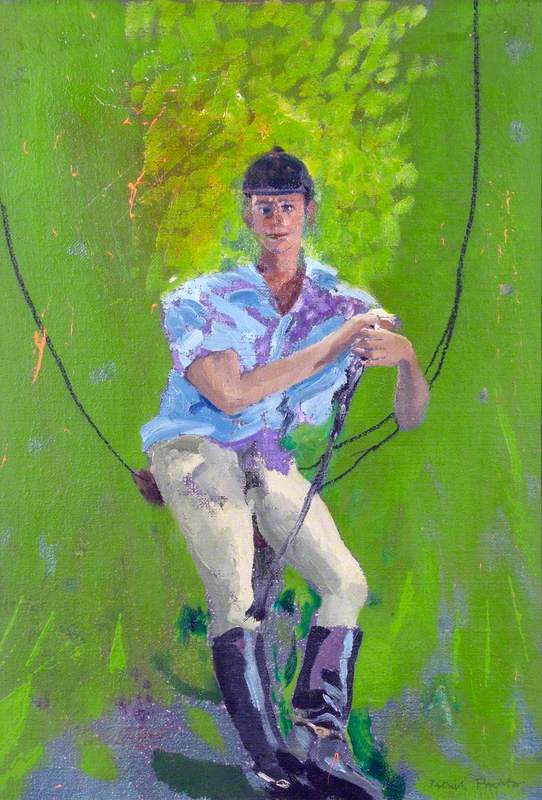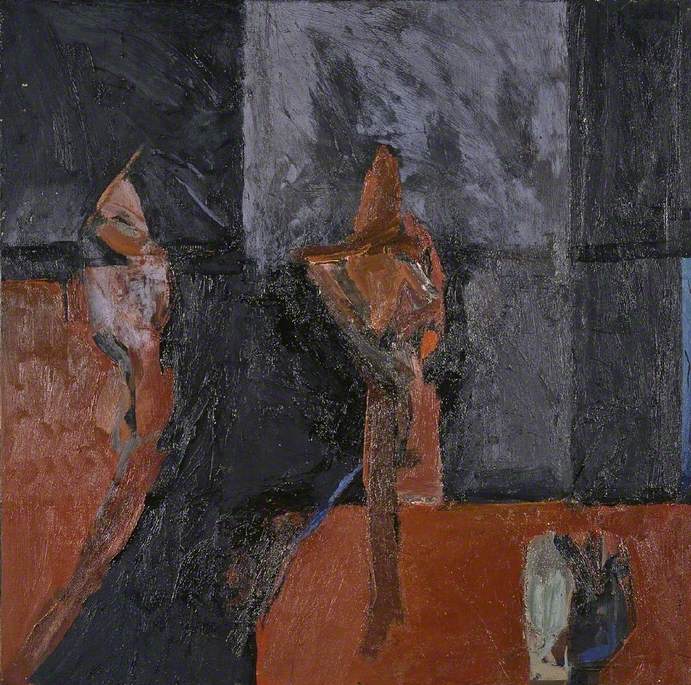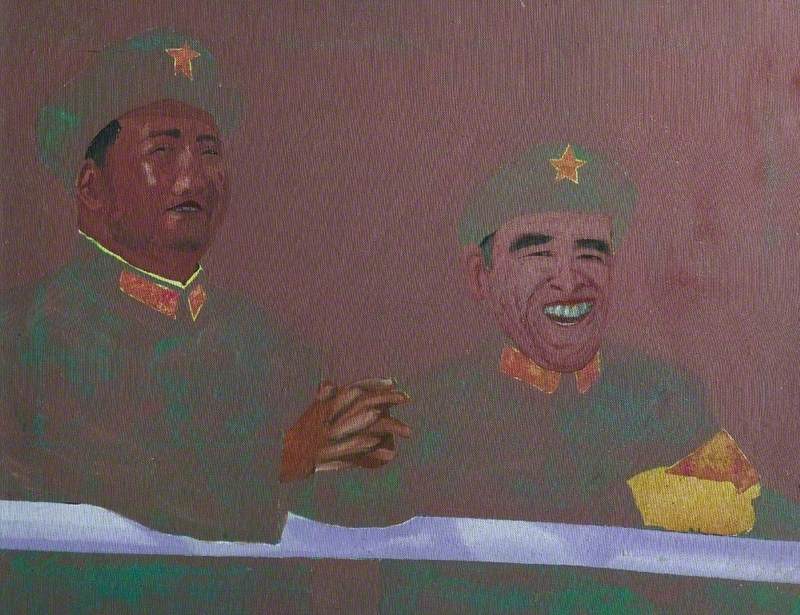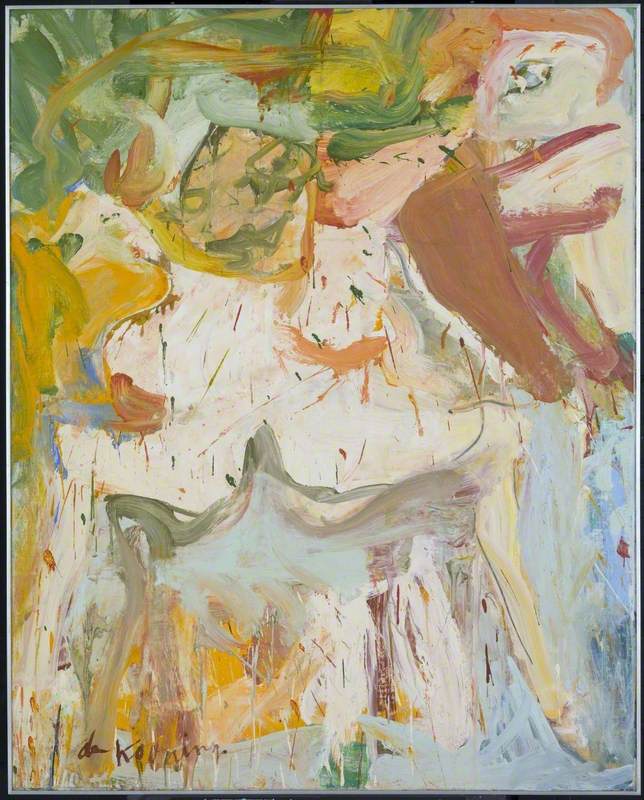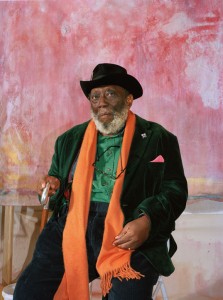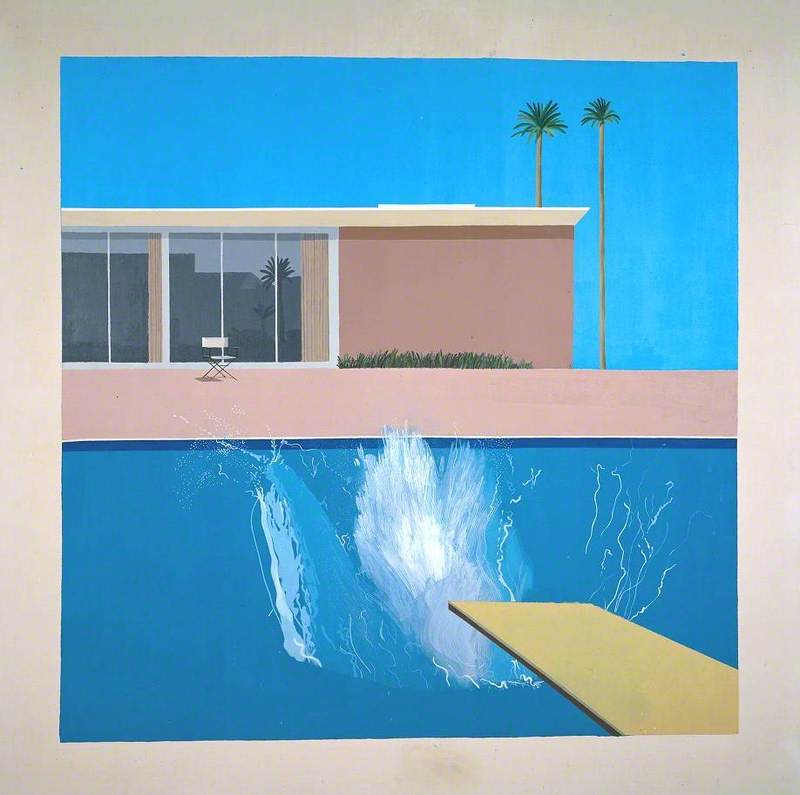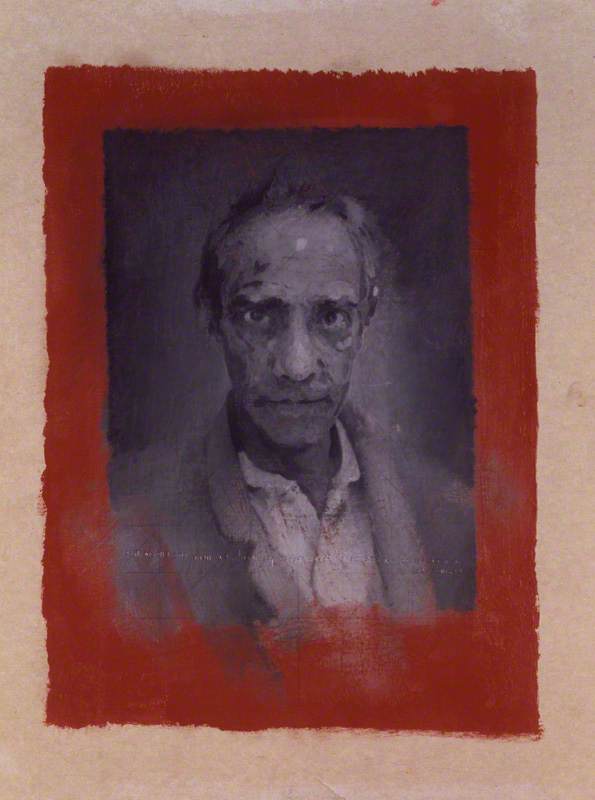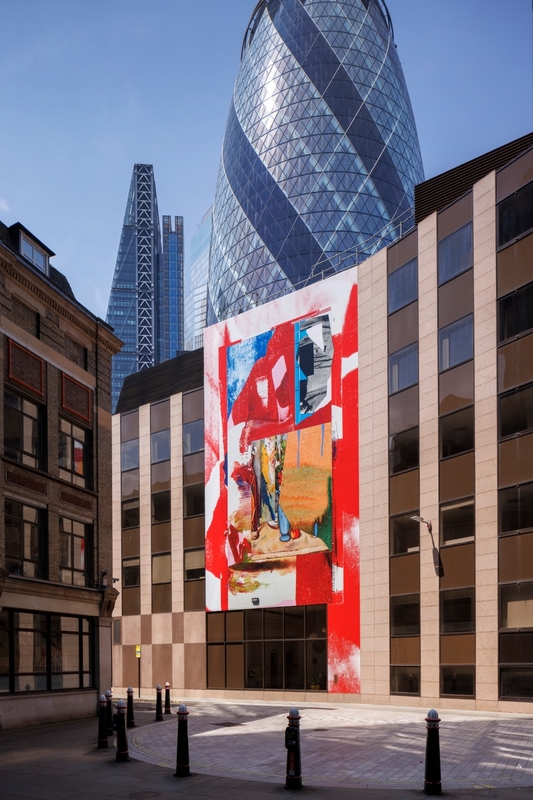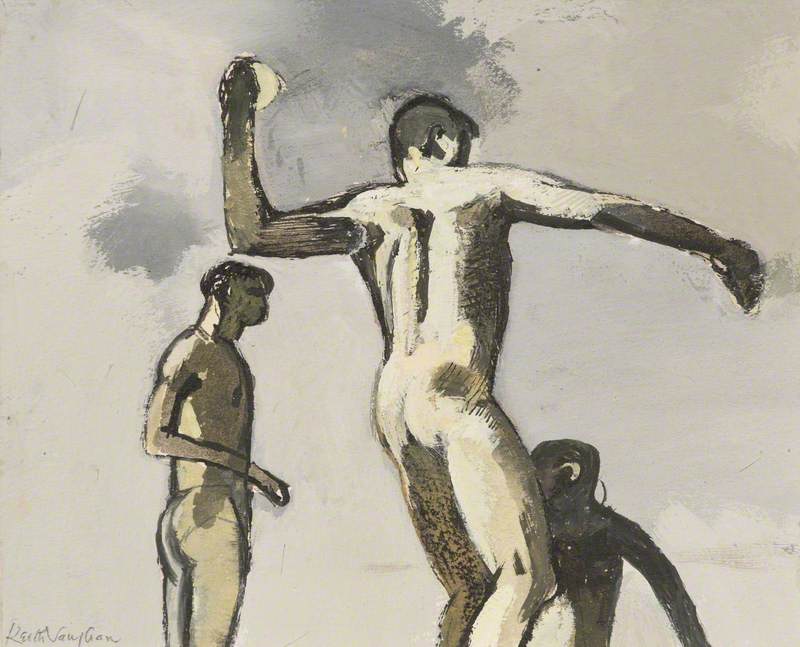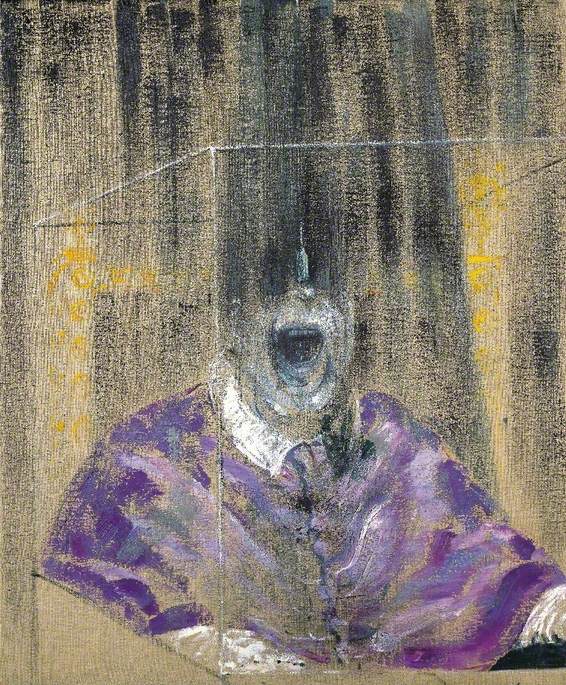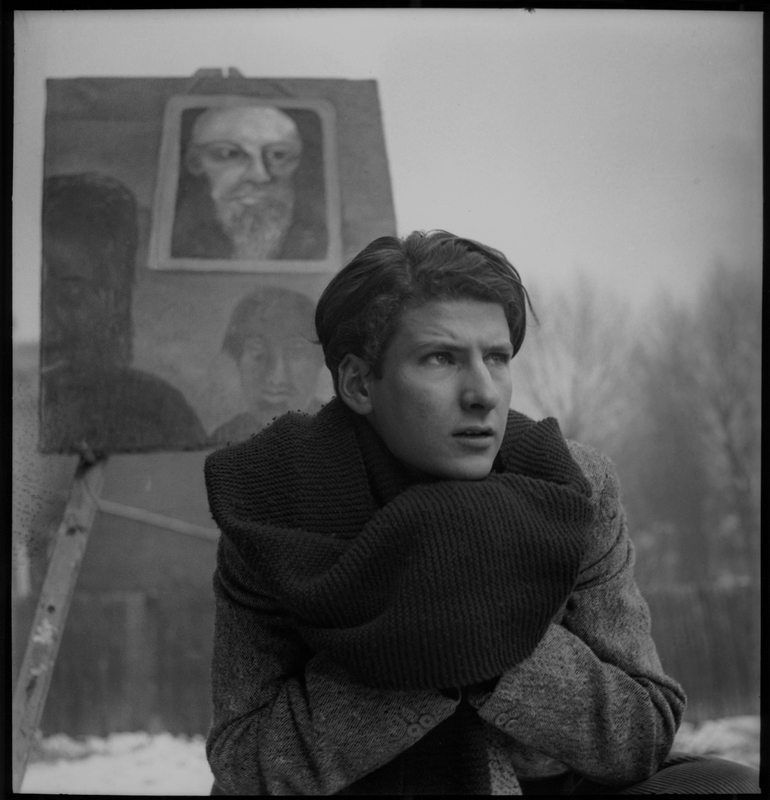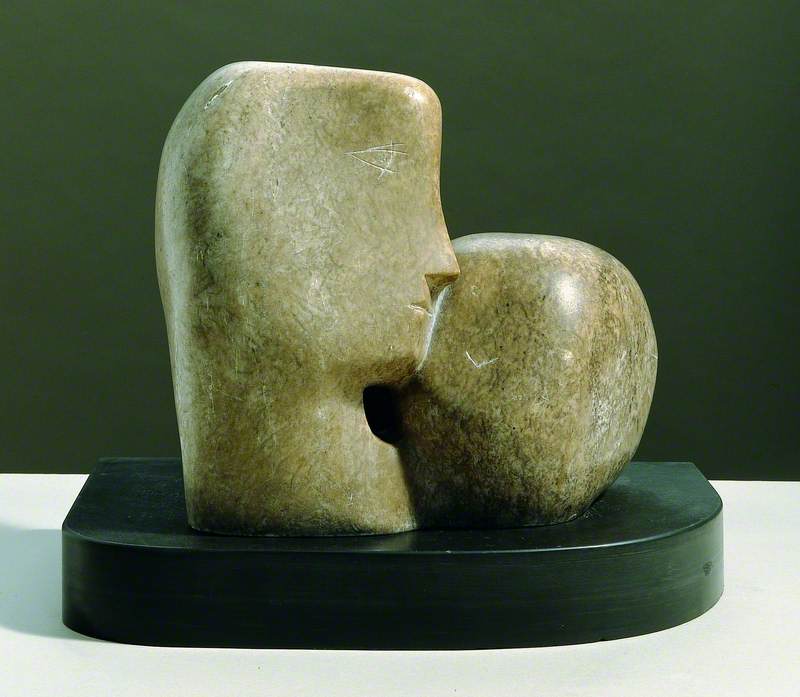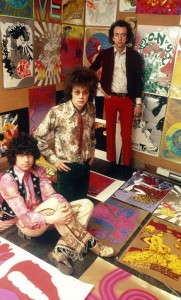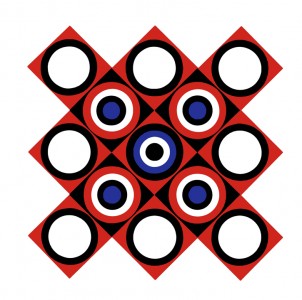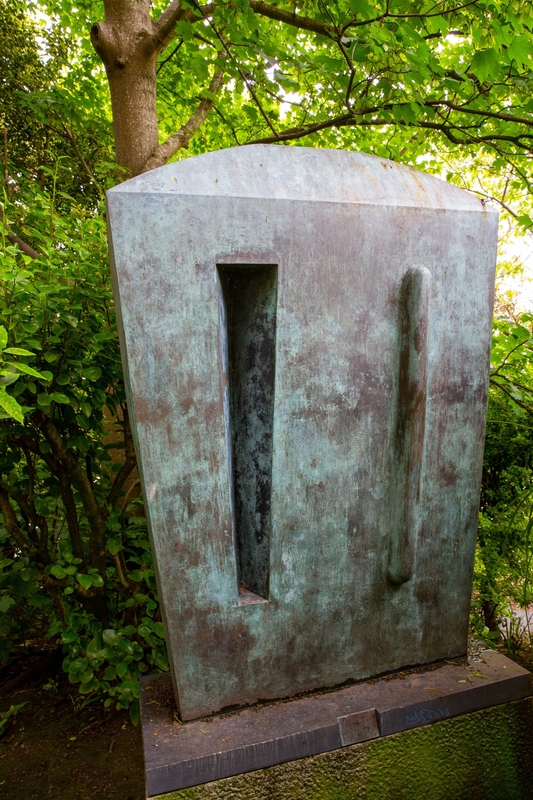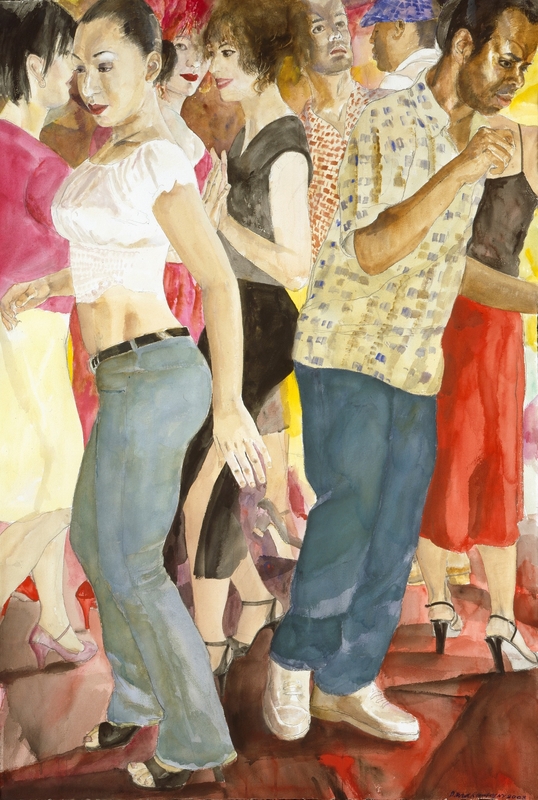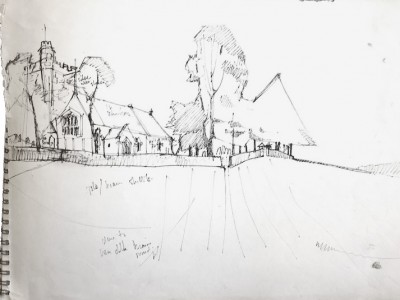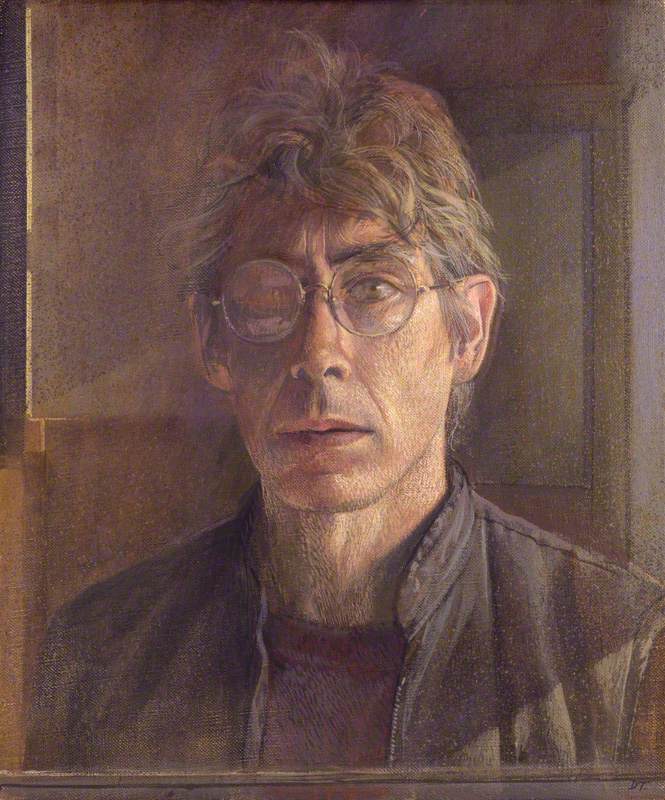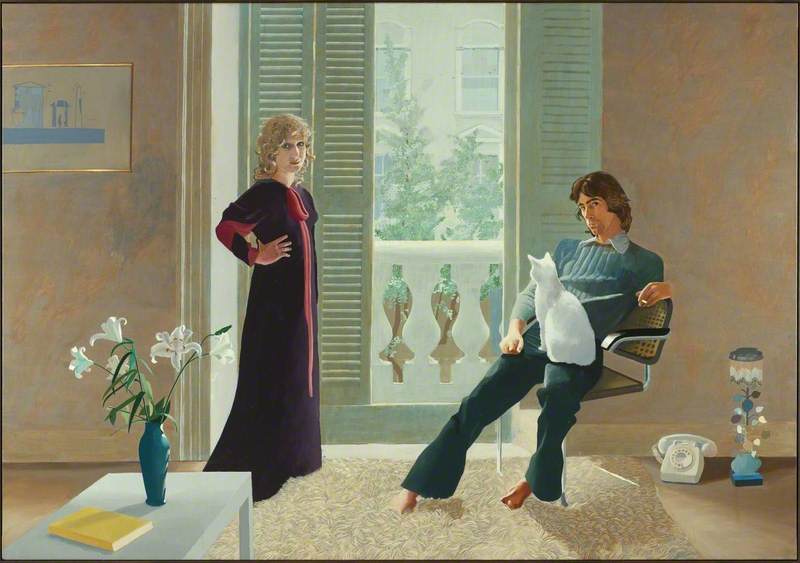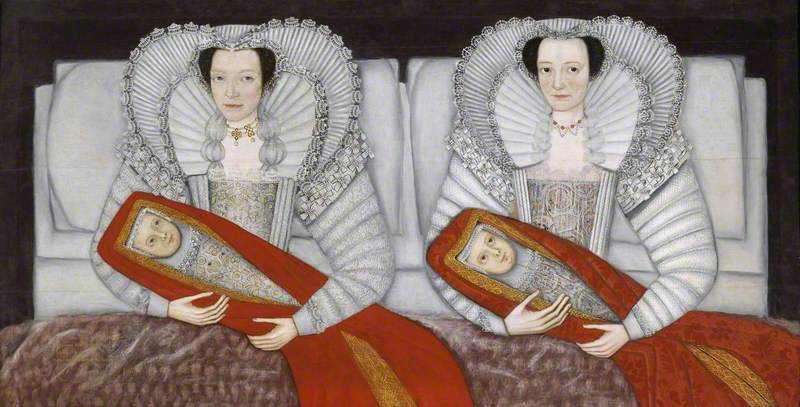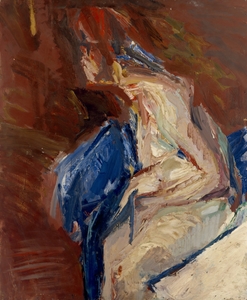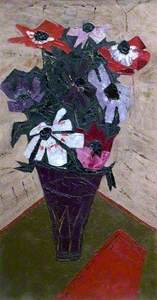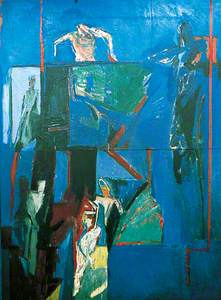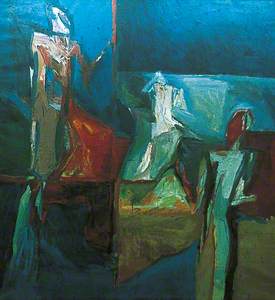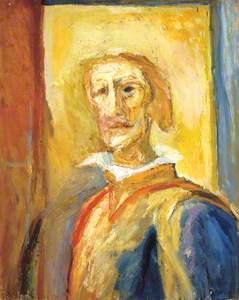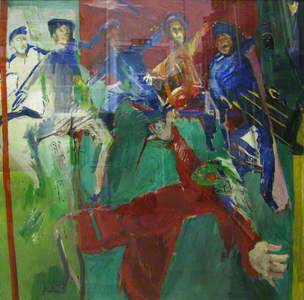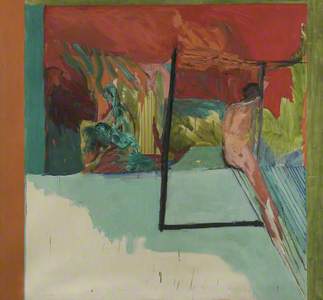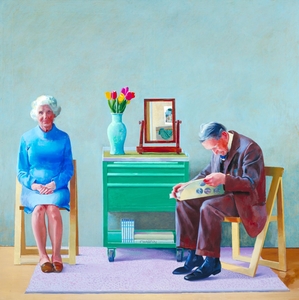Patrick Procktor's first exhibition, at London's Redfern Gallery, opened to great critical acclaim in May 1963, less than 12 months after his graduation from the Slade School of Art. A near sellout, the show propelled him to the forefront of the art scene, as he and his friend David Hockney became the 'dandy art twins' of sixties London, with its burgeoning media representations of art and celebrity.
During Procktor's time at the Slade two approaches to painting predominated there. One was that of the Euston Road School, with its quintessentially English brand of restraint, whilst the other, to which the theatrical Procktor was drawn, was the more performative approach of a group of former pupils of the painter David Bomberg. The tightly composed life painting Seated Figure (1962) is clearly Bombergian in its direct application and colour.
Upon completion of his studies Procktor travelled that summer in the Mediterranean with his lover, the artist Michael Upton. Returning to London he began to paint with heightened confidence: an example is Three Figures in Landscape from November 1962, a painting included in his Redfern Gallery show.
Three Figures in Landscape
1962
Patrick Procktor (1936–2003) 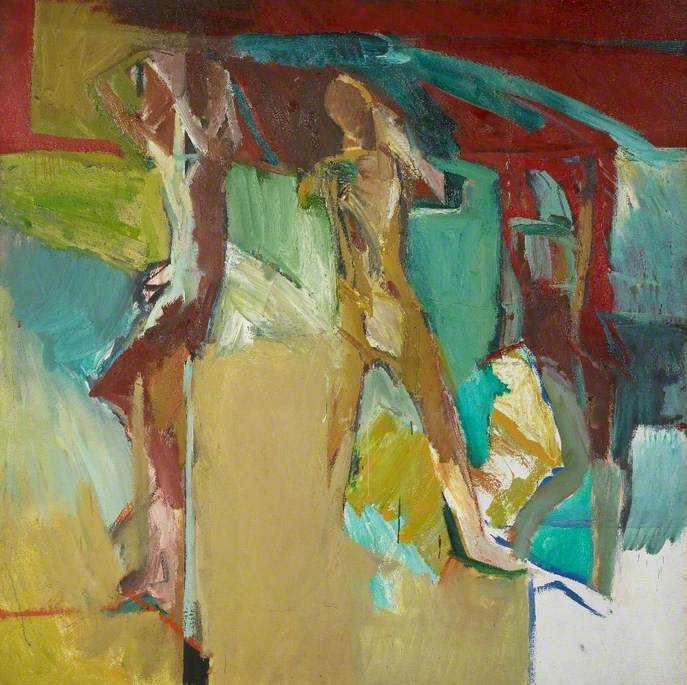
Although the residual influence of Bomberg is clearly evident, here one sees Procktor looking also to artists such as Bacon and de Kooning, manoeuvring between figuration and abstraction as he strives to find himself as a contemporary painter.
Beneath the Surface (1964) refers back to the summer of 1962 – the standing figure on shipboard is Upton – though now, influenced by his friend R. B. Kitaj, Procktor's iconography is more allusive and surreal. Later in the decade he used acrylic paints for the first time, in stains of colour closer to watercolour, the medium in which he subsequently achieved great renown. Two Chinese Generals (1968) is one of a number of paintings based on photographic images culled from the media, made during a period in which the artist flirted with Pop.
Procktor's sixties works are essentially those of an artist in transition, whilst the eighties paintings catalogued by Art UK evince the full development of a Whistlerian lightness of touch that belies intense seriousness and years of hard work. The group of portraits of British Forces in Belize from 1983 are especially noteworthy. Commissioned by the Imperial War Museum, the artist worked from life direct to canvas, in sugared almond tonalities that perfectly illustrate his sensitive and idiosyncratic use of colour.
R. F. M. Harka Raj Rai, 10th Prime Minister's Official Representative: Gurkha in Belize
1983
Patrick Procktor (1936–2003) 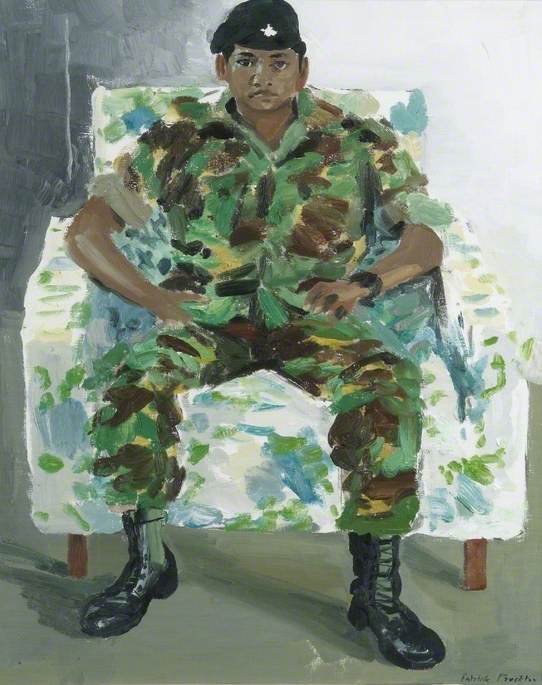
As a portraitist, Procktor balanced dispassionate distance with empathy. In R. F. M. Harka Raj Rai, 10th Prime Minister's Official Representative: Gurkha in Belize he allows the camouflage of his intently posed young subject's uniform to infiltrate the upholstered armchair upon which he is seated. This kind of visual wit is typical of this highly intelligent and self-deprecating artist. Though his star gradually waned after his early success, there is currently a resurgence of interest in this immensely subtle artist, especially among contemporary figurative painters.
Amongst his work of the seventies incidentally, I would alert you to Procktor's Venice mural at Langan's Brasserie in London, recently restored to its full glory, and accessible to the public.
Dr Ian Massey, author of Patrick Procktor: Art and Life, Unicorn Press
